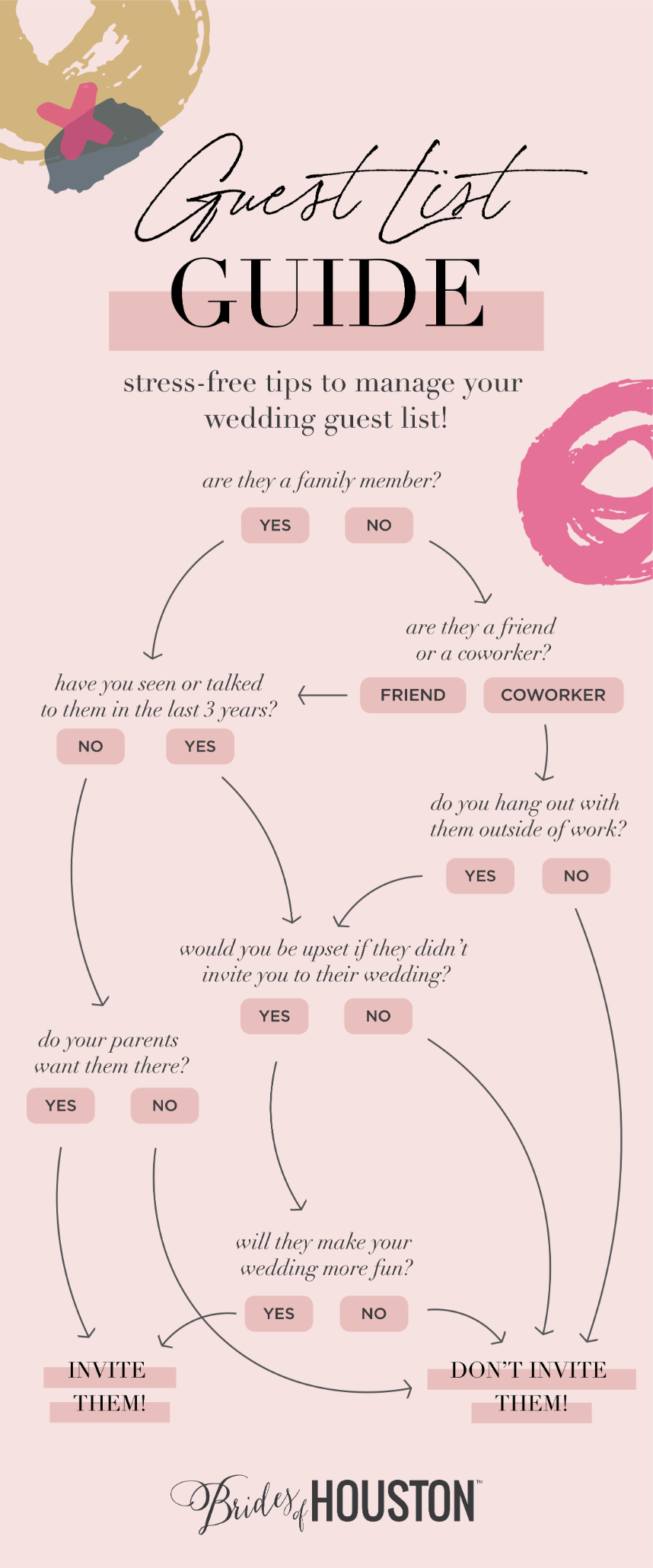Ahh, the ever-important guest list. Knowing your total number of guests is a crucial foundational step that needs to come before most other aspects of wedding planning, so creating your wedding guest list is an important task to complete right off the bat. We’ve got you covered with everything you need to know as you decide who will be celebrating with you on the big day!
Photo // Mustard Seed Photography
1. Set your budget before writing any names down.
Guest list size usually correlates with budget size. If your budget is on the smaller end, a 300-person guest list probably won’t be feasible. A larger budget will allow you to invite more guests or, if you’d still like to keep the guest list smaller, have extra funds to spend in other areas.
2. Keep in mind who is paying for the wedding.
…Or at least the majority of it. If you and your fiancé will be footing the entire bill, etiquette rules state that you certainly have the final say in who’s on the list. However, if parents, in-laws or other family members will be helping to pay for your wedding, their guest list requests should be accommodated and respected as best as possible.
3. Start big and get smaller.
You and your fiancé will both want to create a list (you can combine later) with names of the following: close family, close friends, extended family, other friends. From there, you’ll want to prioritize the names into three groups: non-negotiable invitees, preferable invitees and potential invitees. A good rule of thumb to ask yourself for those on the fringe is: have I interacted with these people in person within the last six months? If not, they may need to be bumped down a priority level until you confirm your budget can accommodate inviting them.
If necessary, pare down. Kindly ask your parents to narrow down their guest list requests to absolute must-haves only. If you’re not super close with your colleagues, definitely don’t feel obligated to invite them, but if you do choose to invite certain work friends, be respectful of other co-workers and don’t discuss the wedding at the office. No need to invite your neighbors unless you’re truly good friends. Other factors to consider when it’s time to make cuts:
Are you close with these friends anymore or have you drifted apart? Will these people be an active part of your future? Remember, you don’t owe anyone an invitation, even if they invited you to their wedding. Realistically, and especially with a larger guest list, you’ll likely only be able to interact with guests outside of your family and wedding party for minutes or even seconds at a time on the big day.
4. Use guest list technology to your advantage.
You’ll want to be able to easily see (and organize) not only names, but numbers. The guest list is not something you’ll want to be editing by hand with pen and paper. Use a spreadsheet you can quickly update and move around, or better yet, use one of the dozens of free tools online for managing guest lists. Even if you’re doing traditional invitations with mail-in RSVPs rather than online RSVPs, these programs can help you keep track of everything related to your list as it changes day to day.
Should we invite children or plus-ones?
If you know a guest is engaged or in a serious relationship, it’s proper etiquette to allow them to bring a date, but for single guests not dating anyone, there’s no need to give them a plus one. Not inviting children can save costs in several areas of the budget and it’s perfectly fine to host a kid-free affair, especially if your wedding is more formal. There are plenty of ways to politely word an invitation to indicate children are not invited. Just ask your invitation designer! To avoid potentially awkward situations, if you do choose not to invite children or have plus-ones, be consistent and try not to make exceptions if asked.
How many wedding guests will actually show?
You can expect 75% – 85% of invited guests to actually show up (fewer if you have a high number of out-of-town invitees or are doing a destination wedding).
What about a B-list?
The B-list refers to a short list of invitees who would only receive an invitation in the event first-priority guests decline. B-lists can be socially tricky and risk hurting feelings, but if you do decide to send a second round of “overflow” invitations after you receive initial RSVPs, create that list of possible invitees from the get-go, don’t send them a save-the-date and make sure their invitation suites are printed with a later RSVP-by date.
When it’s time to create the seating chart:
Once you receive all RSVPs and it’s time to create your seating chart, we can help! Check out our helpful seating chart blog with all the must-knows for creating the best possible seating arrangements for your guests.
Need an unbiased, professional wedding planner to help you navigate the guest list and budget every step of the way? We can introduce you to several experienced Houston wedding planners.
We wish the best for you and all your guests! Cheers!




































































